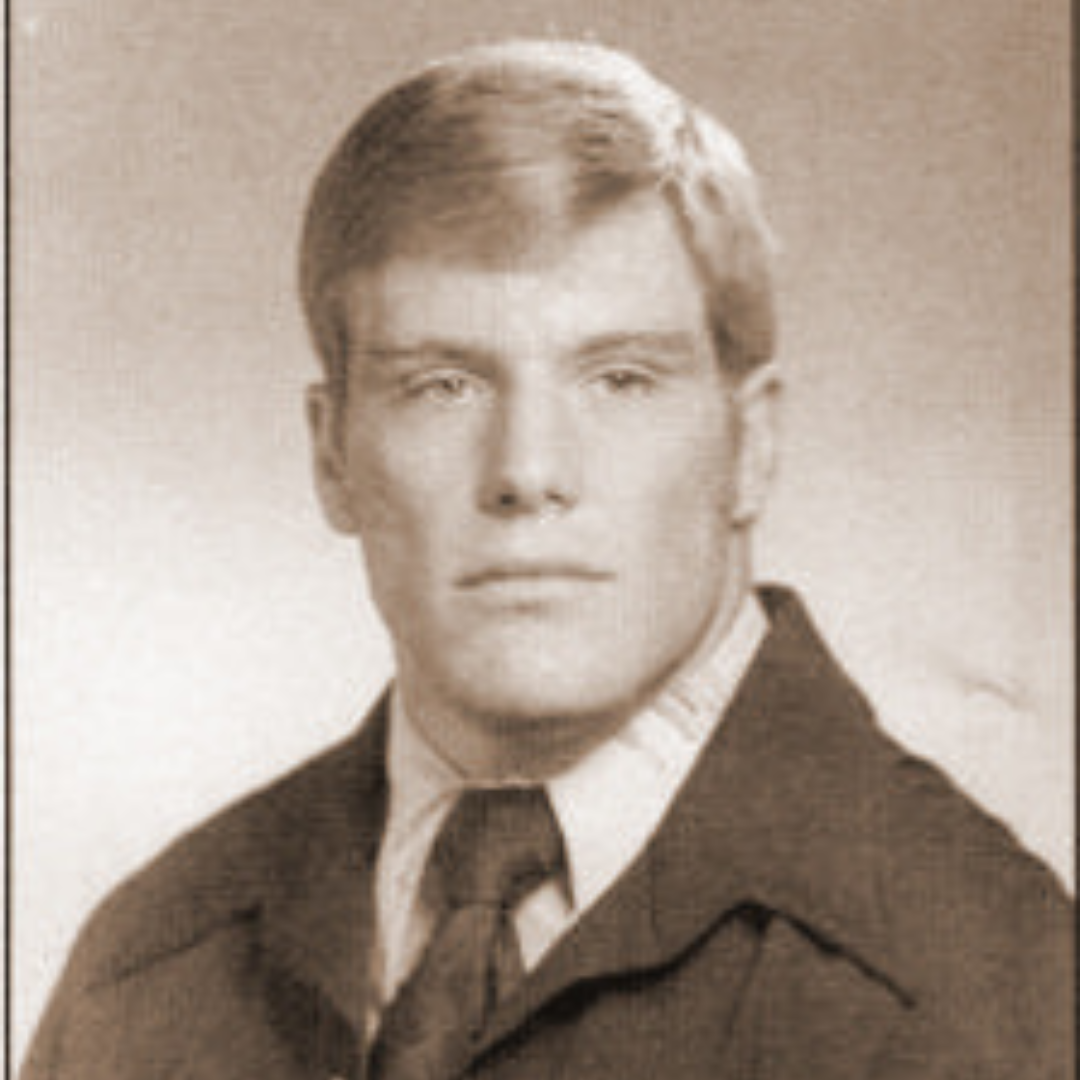
2007 FOOTBALL INDUCTEE
ROD
HORN

Professional Athletes often try to hang on to their careers, even after their playing skills have diminished, but Rodney Horn, an All-American from Fresno, walked away from football just as his career was taking off. Horn played at Hoover High School, University of Nebraska and two years with the Cincinnati Bengals in the National Football League. His last game was the zenith for NFL players, Super Bowl XVI at the SilverDome in Pontiac, Michigan, where the Bengals lost to the San Francisco 49ers. Three days after that 1982 game, he told team officials he would not be back, so they could draft someone else to fill his position. He went on to pursue a career focused on his other passion, natural resources.
Horn was born in Fresno. He was a three-sport athlete at Hoover, excelling in football, wrestling, and track and field. He dropped wrestling his senior year, but set a school shot-put record of 63’7″ that still stands. He placed fifth in that event at the Junior Nationals held in Peoria, Illinois, but football was his premier sport. By graduation, he was 6’4″ and weighed 260 pounds and was named a Parade magazine All-American. He had offers from Utah State and Nebraska, and considered Washington State, but Horn was impressed with the Nebraska facilities and Coach Tom Osborne.
After playing on the freshman team, he started at defensive tackle the next three seasons. “I am really glad I chose Nebraska because I was able to major in my second love and receive a Bachelor’s of Science degree in natural resources and-except for the years I worked for billionaire Steve Forbes on his huge Montana ranch. I have been in Nebraska,” Horn said.Horn was Nebraska’s weight-lifter of the year as a freshman. During his three varsity seasons, he was a real force for Osborne’s teams, which went 28-6 and played in the Orange, Cotton, and Liberty Bowls. He was named the defensive MVP in the Senior All-Star Bowl. “The things I remember most about Rod were his strength, speed and competitiveness,” Osborne said. “He could eat amazing amounts of food. His other quality was that he was a tough person to handle on the field, but a gentle giant off the field.”
The Bengals drafted him in the third round in 1980, and Coach Forrest Gregg took the Bengals from the basement to the penthouse in just two years’ time. Gregg was surprised by Horn’s decision to leave the team after just two years. After all, the 6’4″, 268-pounder had been the starting nose guard following his graduation from Nebraska, but Horn was impressed with the way Gregg responded to his decision.
Gregg knew of Horn’s keen interest in natural resources, a profession he had spent summers learning in Wyoming. Gregg told Horn: “I’ve always thought that football was a springboard for the next event in life.” Horn said Gregg’s words resonated with him. “What he said is true,” he said during a 2006 interview. “Football is a young person’s game and you can play it only so long. I had been involved in contact sports for twelve years, over half of my life. It was a great experience, as a team, to go to the Super Bowl. We would have liked to have won, but it was quite a feat for a team that had been sub-par for so many years. lt was a tremendous two years. We had a lot of great athletes on the defensive line.”
After leaving the Bengals, Horn worked on Forbes ranch, where he policed the large herds of elk and other animals. He also raised the ire of some poachers, and decided he was a pretty big target. As a family man, he decided to quit. Today, he lives in the tiny town of Sidney, where he is General Manager of the South Platte Natural Resources District of Nebraska. Horn was inducted into the Nebraska Hall of Fame in 2003.




